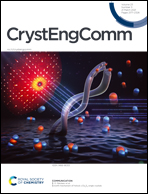High length-to-width aspect ratio lead bromide microwires via perovskite-induced local concentration gradient for X-ray detection†
Abstract
Semiconducting microwires with high length-to-width (L : W) aspect ratio are well suited for electronic and optoelectronic applications. Conventional approaches that first crystallize wires in a solution then mechanically transfer to device-integrable substrates are vulnerable to wire breakage and contamination, resulting in poor reproducibility. Here we introduce a strategy to grow long, thin lead bromide (PbBr2) microwires with the aid of a gradient. We take advantage of PbBr2 and methylammonium lead bromide (MAPbBr3) perovskite co-crystallization to create a local increase in the PbBr2 to methylammonium bromide (MABr) concentration ratio. We then present the successful growth of well-oriented PbBr2 microwires over 1 cm in length and as thin as 1.6 μm in diameter, reaching a maximum 5000 L : W ratio under optimized conditions; this value is almost 200 times larger than we found in pure PbBr2 solution. Structural characterization and elemental composition mapping show no additional phases or impurities present in the dried crystals, and planar-integrated microwires on conductive substrates show an ON/OFF ratio of 10 when exposed to X-ray photons.

- This article is part of the themed collection: Crystal Growth


 Please wait while we load your content...
Please wait while we load your content...